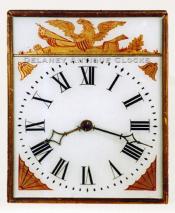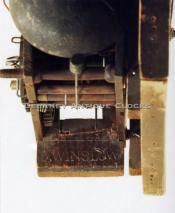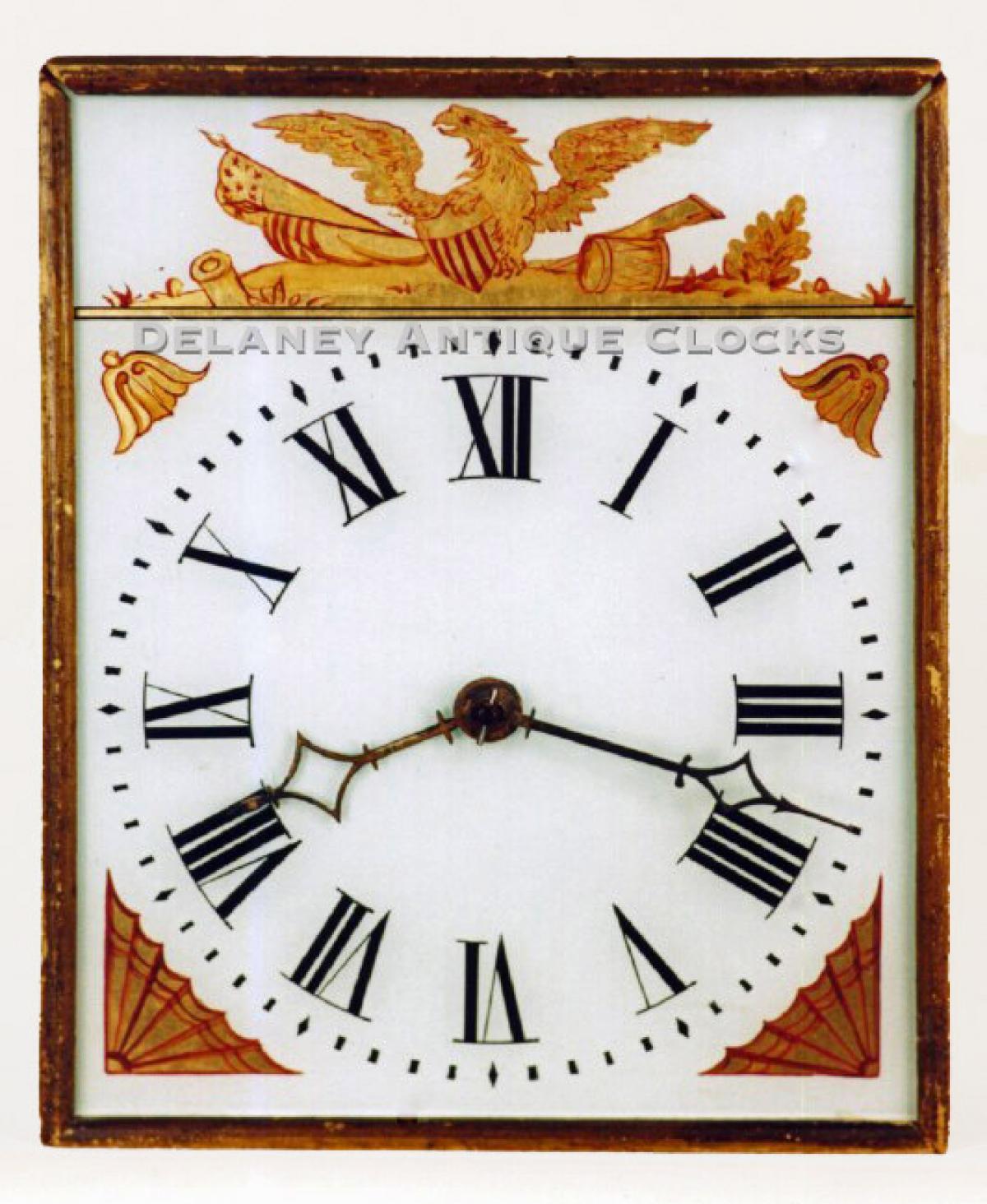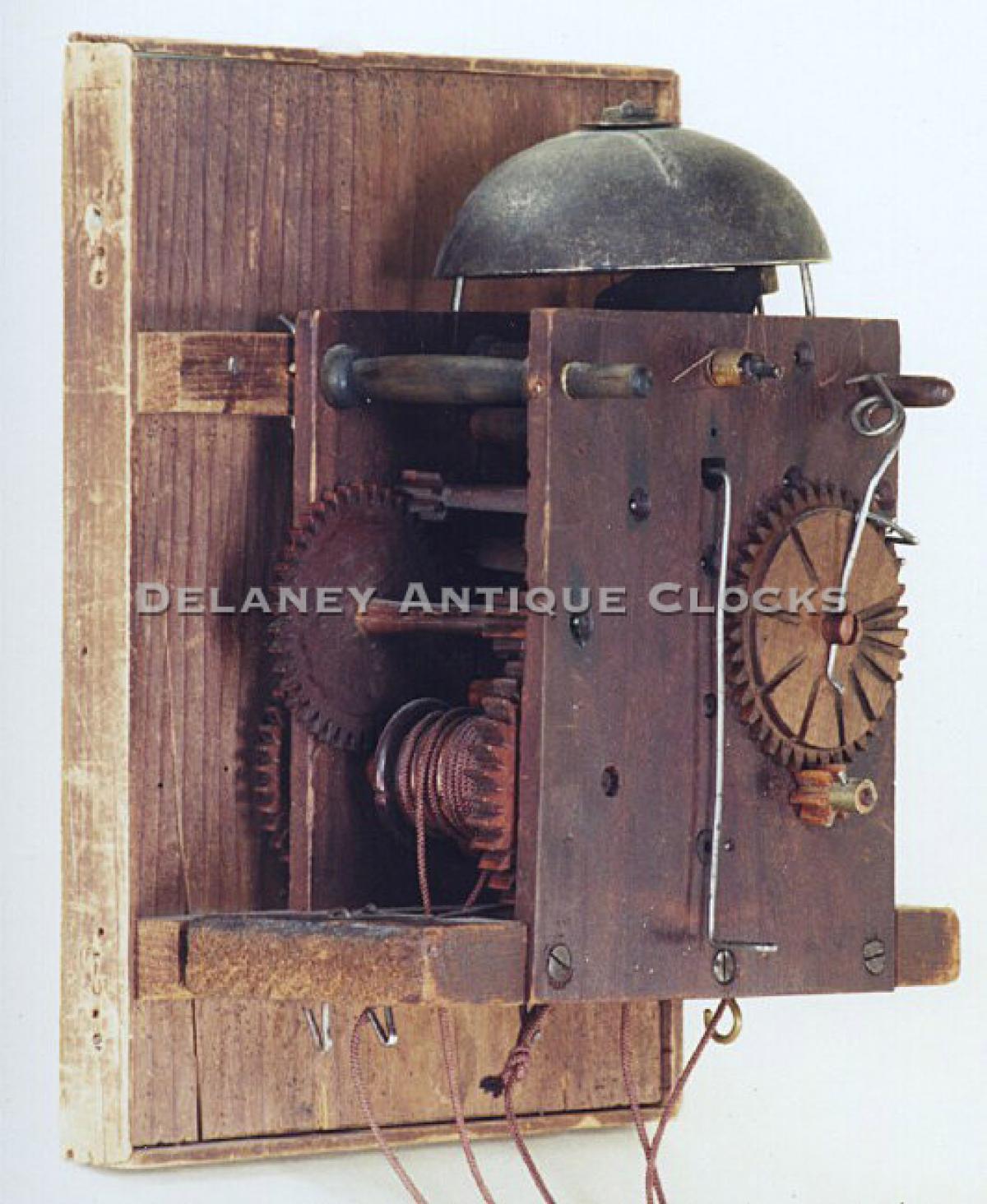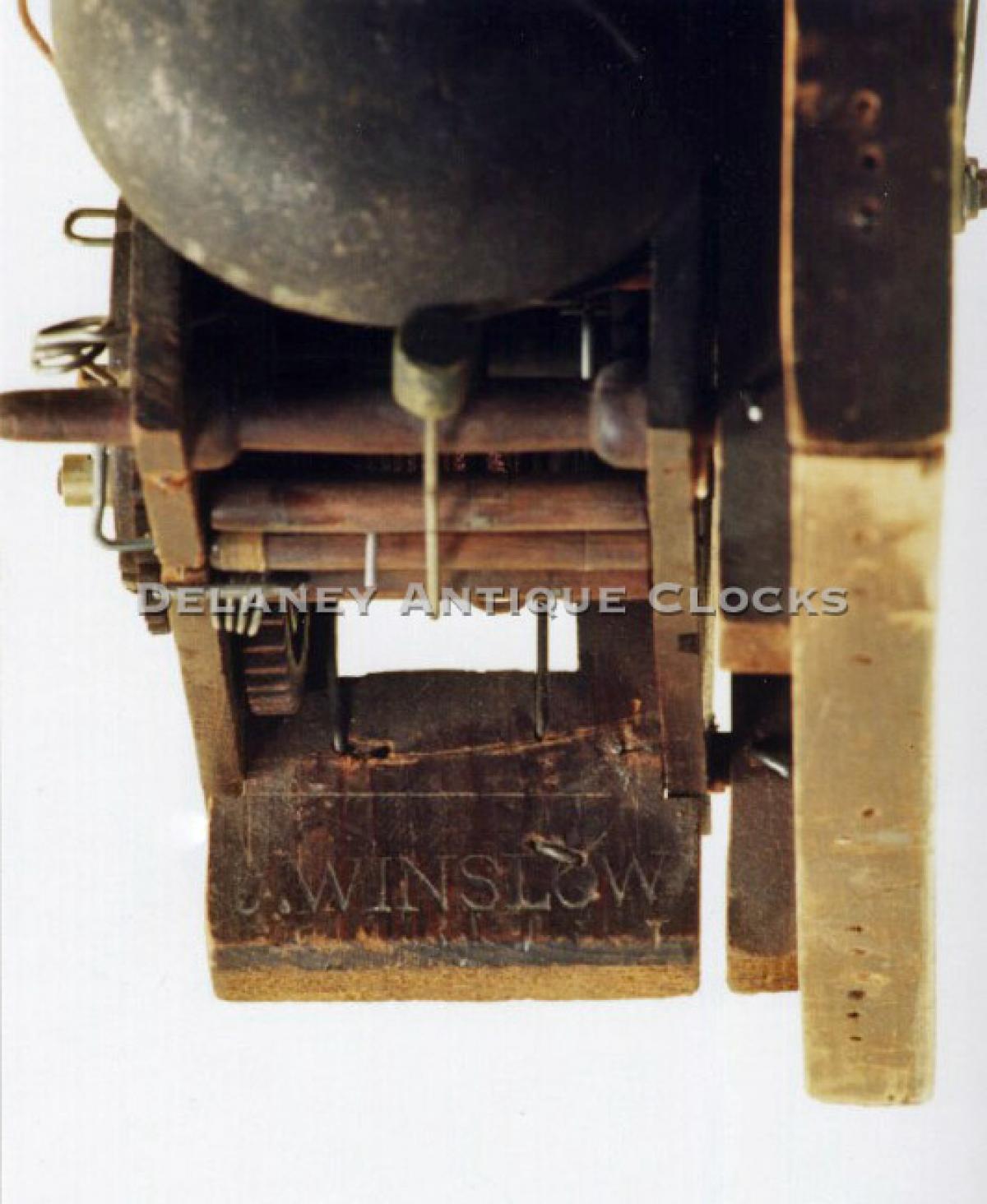Jonathan Winslow A Massachusetts wooden geared dwarf clock. LL-148.
This unique country example, known as a "Dwarf clock," Stands at a modest 47 inches. Crafted from cherry, it retains an older, possibly original finish. The four feet, cut out from the base panel, elevate the case from the floor. The long, narrow waist is fitted with a door, providing access to the pendulum and weights, framed with a reeded molding. This reeded detail is also used on the upper and lower bonnet moldings. The hood columns are turned, and the top of the hood is adorned with three wooden turned finials and a swan neck pediment, adding to its unique charm.
The rectangular-shaped dial, painted onto the back of a piece of glass, is in excellent condition, a testament to the clock's quality and care. The time ring, formatted with Roman hour numerals, is complemented by the lower spandrels decorated in a geometric fan pattern and the upper spandrels featuring bell flowers. The arch hosts a patriotic scene, with an American eagle clutching a shield in its claws, a flag, a drum, and a cannon depicted. The two hands, left exposed, are steel and finely made, retaining much of their original gilding.
The movement is constructed in wood. The plates and gears are cherry, and the pinions are maple. Wooden geared clocks such as this are designed to run for thirty hours fully wound and strike the hour on the cast iron bell, which is mounted above the movement. This clock is signed on the seatboard. The die stamp reads, "J. Winslow." This clock was made circa 1820.
This very clock is pictured and discussed in American Wooden Movement Tall Clocks by Philip Morris on page 335. Several other examples are pictured in his book. Additional clocks can be found in "Horology Americana," written by Lester Dworetsky and Robert Dickstein on page 28. Another example is pictured in The American Clock, written by William H. Distin and Robert Bishop on page 82. A third was in the collection of Nina Fletcher Little. Her clock is pictured and discussed in Little by Little on page 22.
Inventory number LL-148.
Jonathan Winslow was born in south eastern Massachusetts in the town of Rochester on August 15, 1765. He was the son of Shubael and Azubah (Blogett) Winslow. He is recorded as having moved and worked in several Massachusetts towns including New Salem, Worcester, Brookfield in 1795, Palmer and Springfield. He married Elizabeth Bailey of Worcester on January 1, 1790. Jonathan died in Springfield on July 20, 1847.
It was perviously thought that he served his clockmaking apprenticeship with the Cheneys in East Hartford, Connecticut. This family is now well known for being primarily wooden movement clockmakers. This information is now disputed in Philip Morris's new book, \"American Wooden Movement Tall Clocks 1712 - 1835\" due to the lack of similarity in construction styles. We have seen and owned several Winslow dwarf clocks over the last forty-five years. A percentage of these clocks are die-stamp on the seatboard by the Maker. The dwarf clock case form appears to be his most common form. There might be less that a dozen of these dwarf cases pictured in the horological literature.


